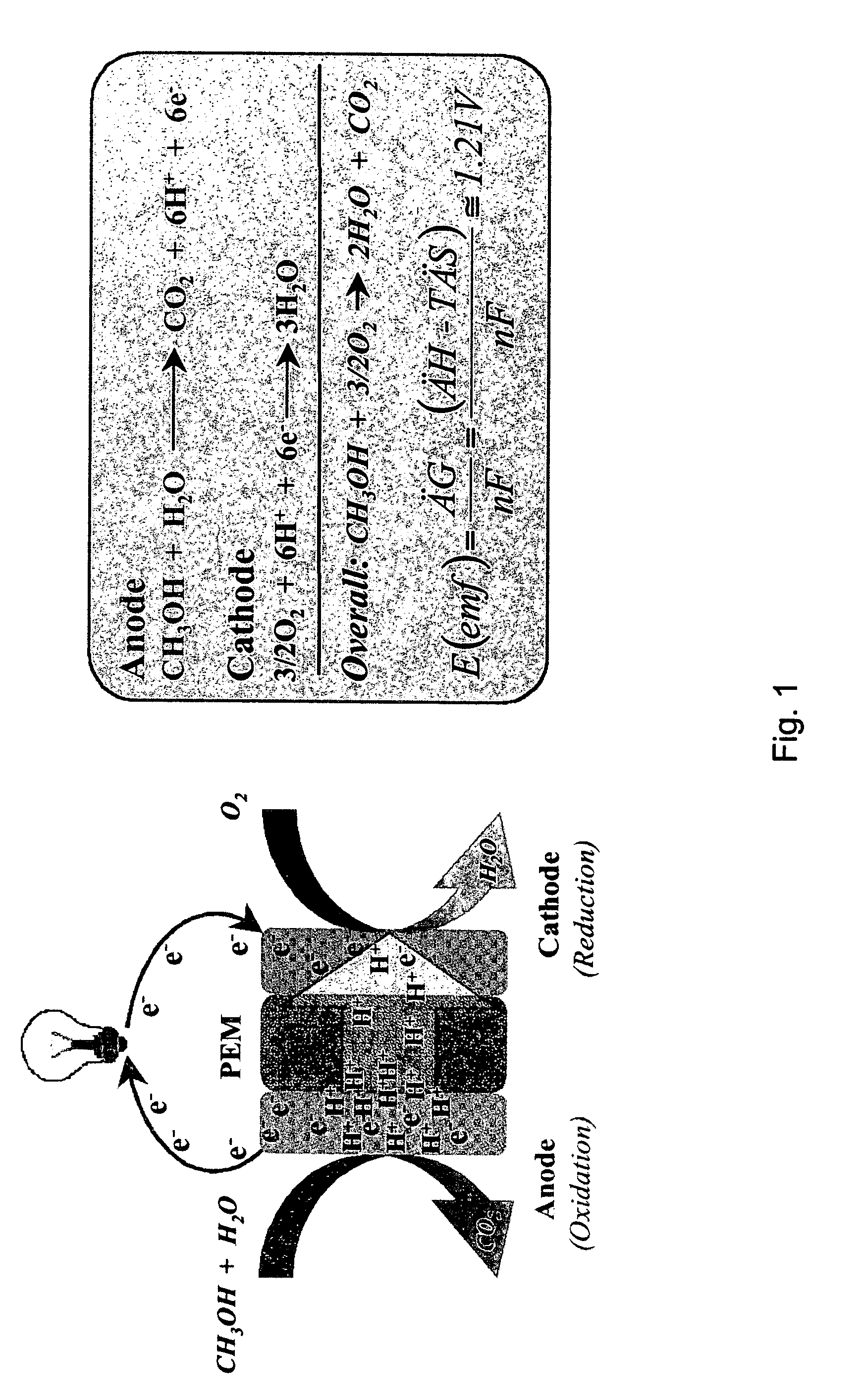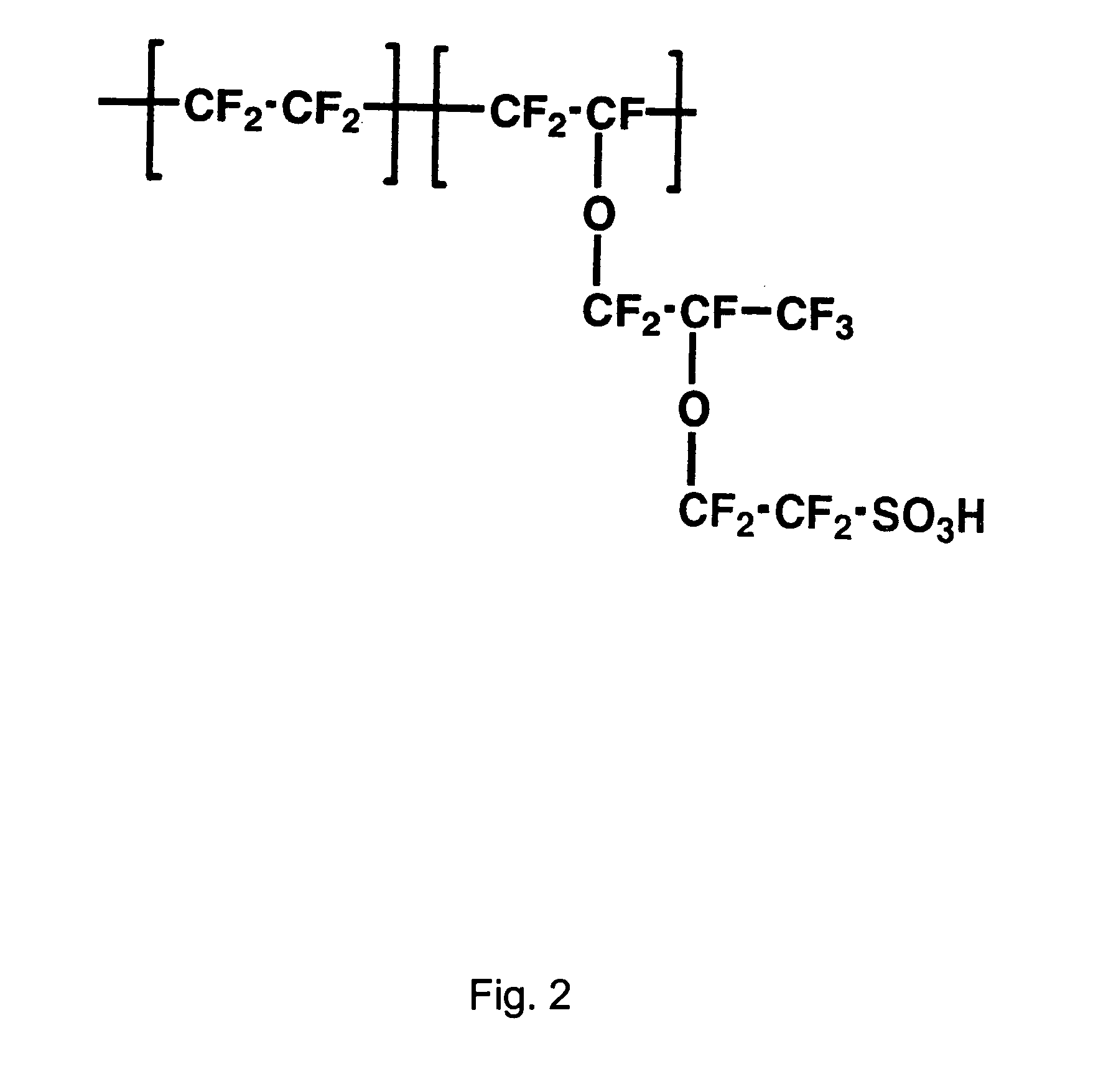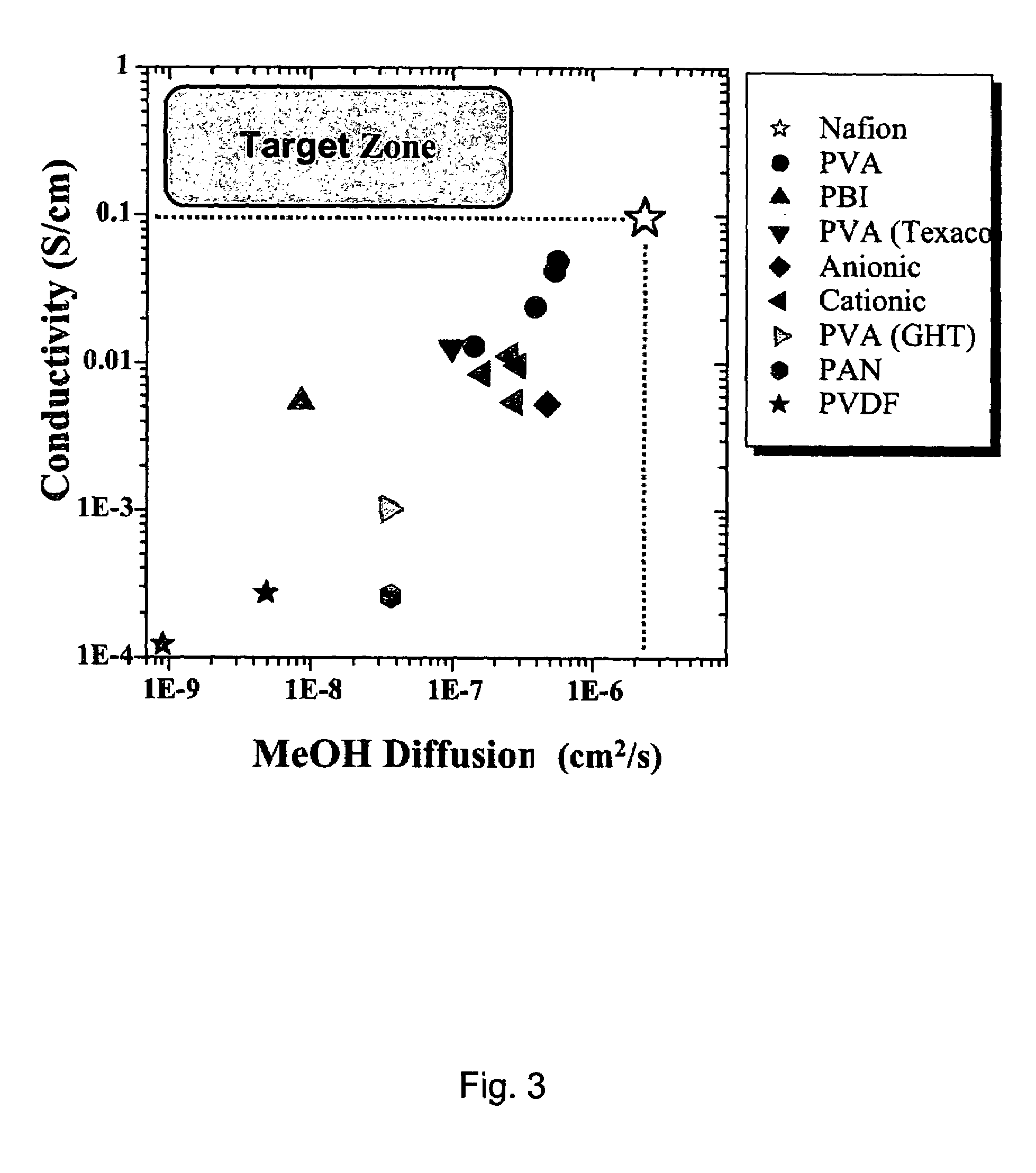Proton exchange membrane materials for the advancement of direct methanol fuel-cell technology
a proton exchange membrane and fuel cell technology, applied in the field of synthesis of improved protonexchange membrane materials for use in fuel cells, can solve the problems of limiting the concentration of methanol that can be fed to the fuel cell, high material cost, and unwanted diffusion of methanol from the anode to the cathode, so as to improve the properties of the fuel cell, reduce swelling, and increase thermal stability
- Summary
- Abstract
- Description
- Claims
- Application Information
AI Technical Summary
Benefits of technology
Problems solved by technology
Method used
Image
Examples
Embodiment Construction
[0032]Improved PEM materials were successfully synthesized by utilizing Hybrid Inorganic-Organic Materials. Reductions in swelling, increased thermal stability, reduced O2 and H2 permeability, and increases in Tg were observed for these materials. These property improvements were achieved with relatively small changes in proton conductivity, which will be discussed in the following sections.
[0033]The technical approaches utilized in the development of this improved PEM materials relied upon the design of alternating copolymers that would interact synergistically with an inorganic phase in the final hybrid organic-inorganic PEM material. It is the synergy between polymer / ionomer matrix and inorganic domains that give rise to the enhanced PEM materials with lower swelling and methanol crossover, while simultaneously maintaining proton conductivity. Successful synthesis of the PEM hybrid organic-inorganic nanocomposite architecture began with the systematic control of the polymer morph...
PUM
| Property | Measurement | Unit |
|---|---|---|
| Length | aaaaa | aaaaa |
| Fraction | aaaaa | aaaaa |
| Time | aaaaa | aaaaa |
Abstract
Description
Claims
Application Information
 Login to View More
Login to View More - R&D
- Intellectual Property
- Life Sciences
- Materials
- Tech Scout
- Unparalleled Data Quality
- Higher Quality Content
- 60% Fewer Hallucinations
Browse by: Latest US Patents, China's latest patents, Technical Efficacy Thesaurus, Application Domain, Technology Topic, Popular Technical Reports.
© 2025 PatSnap. All rights reserved.Legal|Privacy policy|Modern Slavery Act Transparency Statement|Sitemap|About US| Contact US: help@patsnap.com



